The army of the Levant: Alawites, Circassians and others in the French service in Syria
French occupation of Syria
The collapse of the Ottoman Empire was accompanied by a large-scale anti-Turkish movement on its national outskirts, including in the Arab world. Great Britain behind the anti-Turkish speeches of the Arabs promised the Meccan sharif - the ruler of the holy Muslim city of Mecca - royal power over all Arab lands, with the exception of coastal Syria, the southern and eastern parts of the Arabian Peninsula.
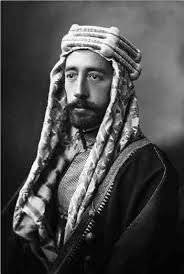 The son of Hussein Faisal ibn Hussein led the Arab armies accompanied by British troops Henry Allenby, who entered the territory of Syria in 1918. The first Arab government was formed in Damascus. However, the plans to create a unified Arab state did not come true - France, which, in accordance with the Sykes-Picot agreements, expected to gain control over Syria, opposed this decision and the British troops left Damascus on November 26. Trying to defend the possibility of creating an Arab kingdom, Faisal made serious concessions to the French on Jewish and Lebanese issues. This caused a negative reaction of the majority of the Arab population, which negatively related to the possible growth of Jewish immigration to Palestine and the prospects for the creation of a Christian Lebanese state, which could also include Muslim-inhabited lands.
The son of Hussein Faisal ibn Hussein led the Arab armies accompanied by British troops Henry Allenby, who entered the territory of Syria in 1918. The first Arab government was formed in Damascus. However, the plans to create a unified Arab state did not come true - France, which, in accordance with the Sykes-Picot agreements, expected to gain control over Syria, opposed this decision and the British troops left Damascus on November 26. Trying to defend the possibility of creating an Arab kingdom, Faisal made serious concessions to the French on Jewish and Lebanese issues. This caused a negative reaction of the majority of the Arab population, which negatively related to the possible growth of Jewish immigration to Palestine and the prospects for the creation of a Christian Lebanese state, which could also include Muslim-inhabited lands. In March, 1920, the Syrian National Congress in Damascus, proclaimed Syria’s political independence under the rule of King Faisal ibn Hussein. However, on April 25, the 1920 Supreme Inter-Allied Council decided to divide spheres of influence in the Middle East between the key European powers - the United Kingdom received a mandate to rule Palestine, Jordan and Iraq, and France - a mandate to rule Syria and Lebanon. In Syria, protests began against the transition to French control. A short Franco-Syrian war began, as a result of which the Syrian army was defeated, and the military minister of the royal government, Yusuf al-Azma, was killed. 24 July 1920, the French troops entered Damascus, the Arab kingdom of Syria was eliminated. On its territory, the French administration created administrative-territorial formations controlled by France - the State of Damascus, the State of Aleppo, the Alawite State, Jabal ad-Druz, Sanjak Alexandretta and the State Great Lebanon.
In 1922, by decision of the League of Nations, the Syrian territories of the former Ottoman Empire were officially divided between France and the United Kingdom. France received the territory of modern Syria and Lebanon, Great Britain - Palestine and Jordan. The transition of Syria under French administration also meant the need to create in Syria the institutions of governance and security forces that could support French rule. For this purpose, the formation of the Levant Army began (the French, and many other Europeans, traditionally called the Mediterranean coast of the Middle East, first of all, the Syrian and Lebanese).
Syrian Legion
History The colonial military formations of France in the Levant began in the years of the First World War and were originally associated with the creation of several units, staffed by representatives of the Levantine peoples, primarily Armenians and Syrians. November 26 The Eastern Legion (La Légion d'Orient) was formed in Cyprus under the leadership of Lieutenant Colonel Romier. The Legion was staffed mainly by Armenians, as well as Syrians - but, for the most part, these were Armenians and Syrians who lived in emigration. The Eastern Legion took part in the hostilities in Palestine as part of two Armenian battalions and a Syrian company. Then, on the basis of the Eastern Legion, the Syrian Legion and the Armenian Legion were created. The Armenian Legion was the most numerous and included 1916 in its membership thousands of soldiers, united in four battalions and a sapper company. However, at the end of 4, he was disbanded - partly due to the death of a large number of soldiers in Cilicia, partly - due to the low discipline of the soldiers and the resulting discontent from the French command.
French officers were not satisfied with the behavior of the Armenian soldiers during the stay of the Armenian Legion as occupying troops in Cilicia (Turkey's southern coast), often reproaching the units of the Armenian Legion for the lack of subordination and discipline, constant internal squabbles, low controllability and perfect inability to serve in the peace time, as garrison and guard units (although no one had ever seriously questioned the fighting qualities of the Armenian Legion). These problems were one of the reasons for the disbandment of the Armenian Legion and the refusal of the French military command of the idea of reviving it in the future.
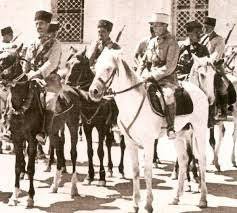 As for the Syrian Legion, the French command noted its low combat capability. The Syrian legion recruited Muslim Arabs, Orthodox Arabs and Greeks, and Maronite Arabs. Ethno-confessional heterogeneity played not the best role in strengthening the combat capability of the Syrian Legion. In addition, the voluntary contracts were signed by the Syrians for a year or two, which also did not contribute to the diligence of ordinary soldiers of the Legion in learning military craft. Geographically, units of the Syrian Legion were scattered throughout many settlements of Central and Southern Syria. The morale of the contingent left much to be desired, since the soldiers in the legion were recruited mainly from representatives of the marginal environment of the Syrian cities, who were not distinguished by their penchant for military affairs and high discipline. There were no thefts and desertions. The only motivation for the service of the soldiers of the Syrian Legion was a salary, unlike the Armenians, many of whom, fighting with the Turkish army, were guided by patriotic motives.
As for the Syrian Legion, the French command noted its low combat capability. The Syrian legion recruited Muslim Arabs, Orthodox Arabs and Greeks, and Maronite Arabs. Ethno-confessional heterogeneity played not the best role in strengthening the combat capability of the Syrian Legion. In addition, the voluntary contracts were signed by the Syrians for a year or two, which also did not contribute to the diligence of ordinary soldiers of the Legion in learning military craft. Geographically, units of the Syrian Legion were scattered throughout many settlements of Central and Southern Syria. The morale of the contingent left much to be desired, since the soldiers in the legion were recruited mainly from representatives of the marginal environment of the Syrian cities, who were not distinguished by their penchant for military affairs and high discipline. There were no thefts and desertions. The only motivation for the service of the soldiers of the Syrian Legion was a salary, unlike the Armenians, many of whom, fighting with the Turkish army, were guided by patriotic motives. A serious problem was the lack of qualified junior commanders. Since the commanding positions in the Syrian Legion were held by French officers and non-commissioned officers, there was a language barrier between ordinary soldiers - Syrians and commanders. To overcome it, a layer of Syrian non-commissioned officers was needed, but there were practically no such people and the intermediate layer had to be staffed by former Ottoman army officers who did not experience special zeal for service and were not distinguished by reliability. In addition, the French officers did not seek to serve in the Syrian Legion, given the low prestige of this compound. Therefore, until the end of 1920, the Syrian Legion carried exclusively guard duty in the garrisons of the Syrian provinces.
Among the French generals, discussions about the possibility of a complete disbandment of the Syrian Legion did not abate, but in 1921, when it became clear that France would need considerable military force for permanent deployment in Syria, it was decided to move to a strategy of radical modernization of the Syrian legion. First of all, the command began to upgrade the staff. An officer school was opened in Damascus to train commanders from the local population — young people from civilian families. Training units were also created in which the training of sergeants in the colonial forces was conducted. At the same time, a bet was made on the material motivation of the service - officers, noncommissioned officers and soldiers of the Legion were raised a salary that substantially exceeded the salary of the Algerian, Moroccan and Senegalese military units of the French colonial forces. Due to this, the number of the Syrian Legion was significantly increased - it was about 8 000 military. Improved and internal discipline in the Legion.
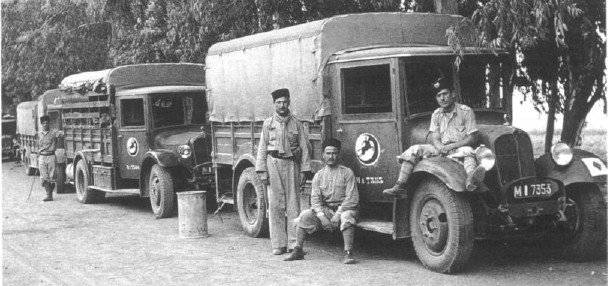
The militia units were an analogue of the Cossacks. Militiamen lived in their families, being engaged in daily affairs, but were on the first signal at the location of the unit and were ready to start serving in the barracks position. The service in the police seemed to many Syrians to be more profitable, as it made it possible to get a military profession without a life in the barracks, while preserving the usual family lifestyle. At the same time, militia militia units did not have uniforms.
Auxiliary companies included the Alawite mountaineers who were employed by the French authorities. Each auxiliary company was under the command of a French officer and chief sergeant. The servicemen wore a uniform uniform and were armed with rifles. In April-June 1921, auxiliary companies played an important role in the conquest of Syrian Alawites. Thus, in Syria, a long-standing mechanism for the formation of colonial troops was used - they included representatives of those peoples who offered the greatest resistance to the colonialists and, not surprisingly, in the new service turned out to be excellent soldiers (among the examples - not only Alawites in Syria, but and Kabili in Algeria, in the British colonies - Nepalese Gurkha, Baluchi or Sikhs).
In 1921, a cavalry regiment was formed with headquarters in Tripoli. When France managed to conquer the inner regions of Syria, including the Tadmor desert, there was a need to strengthen the Syrian cavalry with the mouths of "mecharistov" - camel cavalry, which was staffed by Bedouin Arabs from the tribes. In addition, the needs of the colonial service led to the creation of several engineering and transport units. However, the French military command had long objected to the creation of artillery units within the Syrian Legion.
In addition to these military units, there was also a gendarmerie, which performed its usual functions and partly consisted of old Turkish cadres - officers and noncommissioned officers who served in the Turkish gendarmerie, and after the collapse of the Ottoman Empire, they continued to serve the "new owner", without particularly going into political peripetia. The gendarmerie was distinguished by low combat capability, with the exception of the Circassian units, which at first belonged to the gendarmerie and were considered to be one of the best military units in the colonial troops of the Levant (the Circassians will be discussed below).
A serious test for the French colonial troops in Syria and Lebanon was the Druze uprising in 1925-1927. Druzes - the ethno-confessional community of the Middle East, living primarily in modern Syria, Lebanon and Israel, as well as in some other states, was originally an offshoot of the Ismailis - the Shiite trend in Islam, but in the Middle Ages it broke with the main part of the Ismailis and continues to exist right up until now as a very closed system.
Friendships, like the Alawites, inhabit mountainous areas and are distinguished by considerable cohesion and belligerence. In 1925, the Druze, who lived in the Jabal ed Druz area, raised an anti-French uprising. Given the complexity of the area inhabited by Druze, as well as their belligerence and readiness for constant resistance, it was more difficult to suppress the uprising by the forces of the metropolitan forces than to use against the Druze colonial units with the skills to conduct combat operations in similar geographical conditions. It is significant that after the suppression of the Druze uprising, many of them themselves entered military service in the Syrian Legion.
Alawites
After the suppression of the Druze uprising, the French command turned to the further modernization of the Syrian Legion. On the basis of the Syrian Legion, the Levant Special Forces were formed, on a general basis, included in the Levantine army, along with units of Algerian spags and Senegalese shooters deployed in Syria, the Foreign Legion, and French units.
Recruitment of the Levantine army was carried out, first of all, through the use of ethno-confessional minorities of Syria - the Alawites, the Druze, the Circassians, and the Armenians, on whom the French relied on in opposition to the Arab-Sunni majority of the population. In the period between the final pacification of Syria and the beginning of the Second World War, the number of the Levant army was 10-12 thousand people. It included 10 infantry battalions, 4 cavalry squadrons, 3 camel cavalry companies (mecharistov), engineering, armored vehicles and auxiliary units. Also in the Levant army consisted of units recruited and stationed in the territory of modern Lebanon - 9, the mouth of Lebanese rangers and 22 cavalry squadron of Druze, Circassians and Kurds.
The infantry units of the Levant Special Forces were staffed, as mentioned above, predominantly by the Alawites. Alawites inhabit the mountains of Sharaa in Western Syria and, due to the geographical features of their region, they are distinguished by their unique culture and history. They profess Alavism - a special trend in Islam, whose differences from the rest of Islam are so great that they allow Orthodox Sunnis to refuse to recognize Alawites as Muslims. Nevertheless, the militancy of the Alawites, their tribal division with harsh internal discipline, allowed for a long time to maintain the actual independence of the mountainous regions of Shara. After the Alawites were conquered, the French command soon began to invite them to serve under contract to the Levant Special Forces, drawing attention to the military prowess and courage of the Syrian highlanders. As a result, 8 infantry battalions were formed from the Alawites as part of the Levant Special Forces, which together made up 70-80% of the native personnel. Thus, the strong positions of the Alawites in the armed forces, which are already preserved in independent Syria at the present time, were laid precisely during the period of French domination in the Levant.
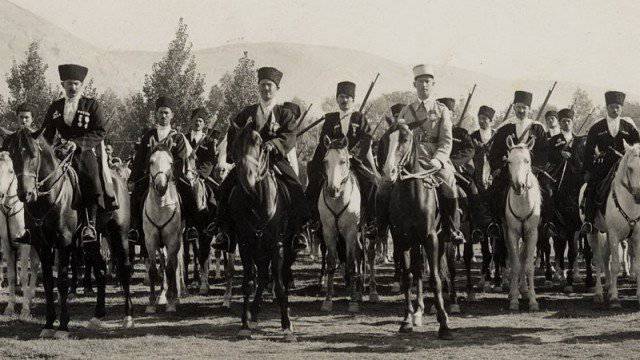
Circassian cavalry
As for the cavalry of the Levant Special Forces, here it is impossible not to dwell on the Circassians. Yes, it was people from the North-West Caucasus who turned out to be in the Middle East for the most part after the Caucasian Wars of the Russian Empire and the associated wave of “Muhajirism” (resettlement of Muslims - Caucasians to the Ottoman Empire), who lived in a militant disposition. and superior martial qualities, constituted one of the most prominent units of the French colonial troops in the Levant. Almost immediately after the Arab kingdom of Syria was occupied by French troops, the former Turkish officers, Circassians, Osman Bey and Toufik Bey, offered the French colonial administration their services as commanders of Circassian units. Osman Bey and Tufik Bey created a cavalry detachment from 50 Circassians, who began to guard the caravan roads in the Aleppo area. In 1922, mass rebellions began throughout Syria. By this time, a young officer, Lieutenant Philibert Kolle, was assigned to Aleppo. Twenty-six years old Frenchman, despite his youth, had experience of participating in the First World War, served in the 9 march regiment of Algerian riflemen (Colle was born in Algeria), and served in Syria since 1919. Transferring to Aleppo, Kolle met the commander of the Circassian platoon Osman Bey and was literally fascinated by the North Caucasian soldiers who served on Syrian soil.
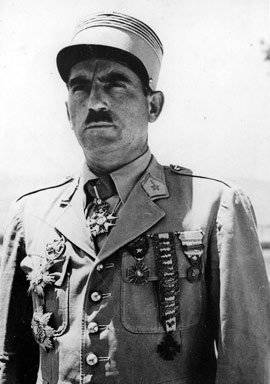 Having obtained permission from the French military command to form a Circassian unit, Collet set about creating a separate squadron of 150 military personnel. The service in this unit, called the 1 Squadron of Mobile Gendarmerie, was carried mainly by Circassians - people from the village of Kuneitra. The commander of the Circassian squadron was Lieutenant Philibert Kolle himself, and the Circassian officers Toufic Bey and Osman Bey received the rank of junior lieutenant (S-Lieutenant). The first time of its existence, the Circassian squadron served as a mobile guard, then was included in the compound squadrons of light cavalry. In 1922-1924 squadron participated in hostilities to pacify the districts of Hajlar and Idlib. By 1924, the unit was officially named the First Circassian Squadron, which consisted of 160 soldiers.
Having obtained permission from the French military command to form a Circassian unit, Collet set about creating a separate squadron of 150 military personnel. The service in this unit, called the 1 Squadron of Mobile Gendarmerie, was carried mainly by Circassians - people from the village of Kuneitra. The commander of the Circassian squadron was Lieutenant Philibert Kolle himself, and the Circassian officers Toufic Bey and Osman Bey received the rank of junior lieutenant (S-Lieutenant). The first time of its existence, the Circassian squadron served as a mobile guard, then was included in the compound squadrons of light cavalry. In 1922-1924 squadron participated in hostilities to pacify the districts of Hajlar and Idlib. By 1924, the unit was officially named the First Circassian Squadron, which consisted of 160 soldiers. In the interwar period, the Circassians especially distinguished themselves in battles during the liquidation of the Druze uprising. In September, the 1925 of the Circassians took the city of Suweida - the capital of the Druze. The military prowess of the Circassians forced the French military command to pay more attention to this national minority. In November, 1925 was created a special Circassian regiment. Its structure included three cavalry squadrons. As a result of the fighting to pacify the Druze, Circassian squadrons suffered great losses - 302 people were killed, including 20 officers, and 700 people were injured. Among those killed in battles with Druzes were the creators of the first Circassian unit, Lieutenants Tufik-Bey and Osman-Bey, and the standard-bearer of the squadron, Lieutenant Haji Bey. Philibert Kolle himself survived and in 1926 he received captain shoulder straps.
After the conquest of the Druze, the strength of the Circassian regiment was increased to 5, and then to 8 cavalry squadrons. In each of them served from 100 to 150 military personnel. Thus, by 1927, the total number of the Circassian regiment was 1 000 cavalrymen. The standard of the Circassian cavalry was approved - a square green silk panel with a gold fringe embroidered with the inscription “Circassians, forward!” In the Circassian language and seven stars, symbolizing the seven Adyghe-Circassian tribes of the North-Western Caucasus. At the bottom of the cloth there was an inscription “Circassian regiment of light cavalry” - also in the Circassian language. On the other side of the standard, there were French inscriptions “The Circassian Squadron Regiment” and a list of the main victories of the Circassians in the French service.
The Circassian cavalry retained the national dress as a parade uniform - black (in winter) and white (in summer) beshmet, black circa, white hood.
The internal structure of the Circassian regiment was as follows. The regiment was divided into 8 squadrons, each of which was under the command of a French officer. The deputy commanders of the squadrons were Circassian officers. Each squadron included four platoons led by Circassian junior officers. The squadron headquarters served three or four French corporals. In addition to immigrants from Syria, Circassians of Asia Minor arrived in the Circassian regiment, service in the ethnic unit created by the French was so prestigious among the Muhajirs. By 1930. The prestige of the service in the Circassian regiment has increased so much that volunteers of a different nationality — Bedouins, Arabs, Druze, and even Armenians — have been asked and, as an exception, accepted.
The transformation of the Levant Special Forces began in the second half of the 1930s. In 1936, France granted independence to Syria, although in reality it didn’t do anything to implement this plan. French troops remained in places of permanent deployment in Syrian territory, although their internal structure has undergone some changes. In 1937, the Circassian regiment was abolished. His military mostly dispersed to other cavalry units of the French army. Philibert Kolle was promoted to Major in 1938 and was appointed Commander of the 4 Battalion of the 1 Regiment of Moroccan Riflemen.
World War II and its consequences
World War II affected the territory of Syria. When France capitulated to 1940 in July, Syria was under the influence of the Vichy Collaborative Government. Vichy leadership decided to revive the Circassian regiment. They recreated all 8 Circassian squadrons, assigning them new numbers. In October, 1940 was appointed Philibert Kolle as commander of the Circassians. The number of the updated Circassian regiment was increased to 2 000 soldiers and officers in 14 cavalry squadrons. Three squadrons were motorized. The Circassians were to serve on the border of French Syria with the British possessions in Palestine. The Vichy commanders intended to use the Levant Special Forces to attack Iraq, where Prime Minister Rashid Ali al-Gailani, who collaborated with the Nazis, began anti-British resistance.
Philibert Kolle, who commanded the Circassians, was promoted to lieutenant-colonel, but soon moved to the side of the Free French Forces, who fought in the anti-Hitler coalition. Together with Collet, 19 officers and 300 sergeants and soldiers left on the side of the Free French forces. However, most of the Circassians remained loyal to the oath, which implied service to the Vichy command. The Circassian regiment was divided into two units of light cavalry and a detachment of mounted partisans. Several squadrons from the Circassian regiment were transferred to the 7 and 8 regiments of African riflemen. The Circassians, who remained in the Vichy service, had a good reputation in fighting against British troops. Thus, 16 June 1941, in the battle of Quneitra, a detachment under the command of Lieutenant Colonel de Comon, which included two Circassian squadrons — cavalry and motorized, managed to defeat British troops as part of the three companies of the 1 5th Royal Fusilier Regiment battalion. The Circassians attacked the British positions, breaking through the defenses and managing to take Quneitra. As a result, 13 officers and 164 sergeant and soldier of the Royal Fusilier Regiment were captured in Vichy.
On the other hand, in the British-controlled Transjordan, a cavalry regiment was created as part of the Free French forces, consisting of two Circassian squadrons and two Moroccan squadrons. Philibert Collet, who took the side of the Free French forces, began to grow rapidly in the ranks - on June 22 he was appointed head of the administration of Damascus after the latter was occupied by the troops of Free France, simultaneously promoted to the rank of colonel, and in August became a brigadier general. In 1942, the Circassian regiment was reformed again. Now it included 6 squadrons, 1 on January 1944, the Circassian mechanics squadron was formed.
The Levant Special Forces continued to exist until August 1945, while France maintained control over the territory of Syria. 9 July 1945 was announced that after the withdrawal of France from the Middle East, the Levant Special Forces would be placed under the command of the national armed forces of Syria and Lebanon. After Syria gained political independence, the Levant Special Forces were disbanded. Some of the servicemen continued to serve in the French army, transferring to other units of the colonial and metropolitan forces, but the majority either demobilized or continued service as part of the armed forces of the sovereign Syria and Lebanon. In principle, the Syrian Legion and the Levant Special Forces can be considered as direct predecessors of the armed forces of modern Syria and Lebanon, especially since the personnel of the officer corps of the latter, to a large extent, in the first years of independence were staffed by French service veterans - officers and non-commissioned officers Special Forces Levant.
As for the servicemen of the Circassian cavalry, many of them went to serve in the royal guard of neighboring Jordan - as is known, Circassian guards are guarding the Jordanian kings. Circassian units were not created in Syria itself. The Alawites, who formed the bulk of the infantry units of the Levant Special Forces, continued to serve in the Syrian army, becoming a special military caste, which occupied important positions in the Syrian armed forces. In many ways, it was the French occupation of Syria that owed their ascension to power to Assad - Alawites on ethnic and religious affiliation, since the Alawite penetration into the military elite of Syrian society began in the 1920-s, after the subordination of the Syrian lands of France.
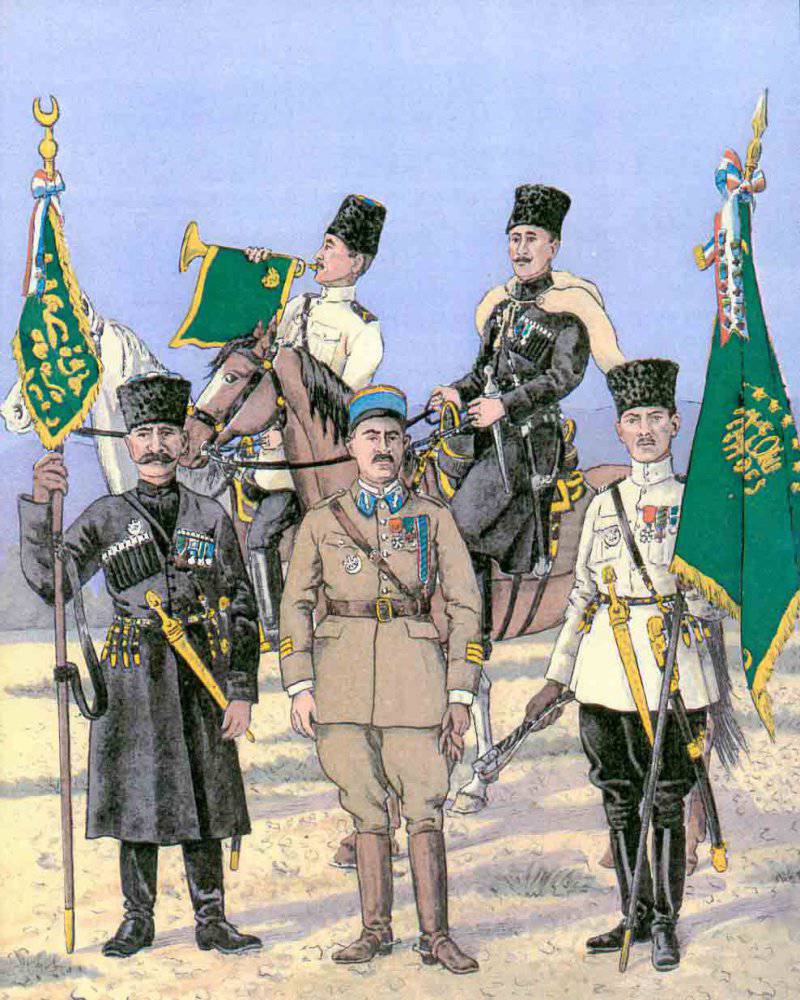
Information